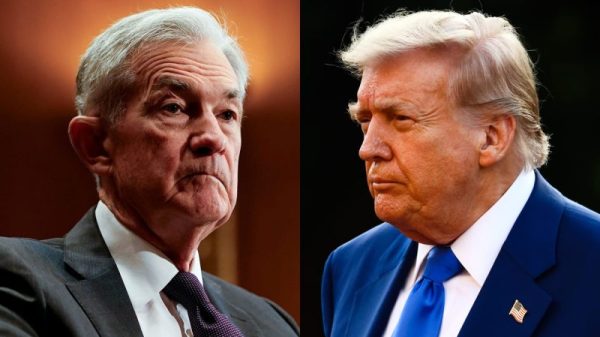Federal Reserve policymakers on Wednesday signaled they will push on with more interest rate hikes, with several supporting a top policy rate of at least 5% even as inflation shows signs of having peaked and economic activity is slowing.
“I just think we need to keep going, and we’ll discuss at the meeting how much to do,” Cleveland Fed President Loretta Mester said in an interview with the Associated Press.
The remarks appeared to reflect a widely shared view among her fellow policymakers, most of whom as of December had penciled in a 5.00%-5.25% policy rate in coming months.
Mester said that for her part she expects the Fed’s policy rate to need to go “a bit higher” than that, and stay there for some time to further slow inflation.
The Fed’s benchmark overnight lending rate currently sits in a target range of 4.25% to 4.50%, and investors expect the Fed to lift that rate by a quarter of a percentage point at the end of its Jan. 31-Feb. 1 meeting.
But slowing spending, inflation, and manufacturing — all reported earlier on Wednesday — have helped stoke expectations that the Fed will end its current round of rate hikes sooner than Mester and most of her colleagues expect, with the policy rate just shy of 5%.
The central bank began raising borrowing costs last March, when the policy rate was in the 0%-0.25% range and inflation was starting to make a climb that would see it rise to 40-year highs, several times the Fed’s 2% target.
‘Why stall?’
Like Mester, St. Louis Fed President James Bullard, speaking with the Wall Street Journal earlier, said he too sees the policy rate rising to the 5.25%-5.50% range, and added that policymakers should get it above 5% “as quickly as we can.”
Several Fed officials have expressed support for slowing to quarter-percentage-point rate increases, after last year’s much faster pace of rate hikes in mostly 75-basis point and half-point increments.
Bullard expressed more impatience. Asked if he was open to a half-percentage-point increase at the Fed’s upcoming meeting, he asked “why not go to where we’re supposed to go? … Why stall?”
The answer may in part be found in the latest “Beige Book” report published by the Fed on Wednesday. The compilation of survey data from the central bank’s districts around the country showed that while prices continued to increase, the pace in most districts was reported to have slowed.
And while employment continued to grow at a “modest to moderate” pace in much of the country, and several Fed districts reported modest economic growth, the New York Fed reported a contraction in activity, four other districts reported slowdowns or slight declines, and most expected little growth ahead.
Still, Fed policymakers say the mistake they do not want to make is to stop short of defeating inflation, only to have to raise rates even more to do the job later on, as happened in the 1970s and 1980s
Even Philadelphia Fed President Patrick Harker, who is generally less hawkish than Mester or Bullard and wants the Fed to switch to quarter-percentage-point hikes ahead, sees “a few more” rises in borrowing costs before a pause.
Dallas Fed President Lorie Logan also supports a slower rate hike pace ahead because of the uncertain outlook and the need to be flexible. But she also signaled the Fed may need to raise rates higher than is widely expected to keep financial conditions tight enough to press down on inflation.
“I believe we shouldn’t lock in on a peak interest rate,” Logan said in Austin, Texas. She added that even once inflation is headed convincingly down to 2% and the Fed does stop raising rates, the risks will be “two-sided” and that further rate hikes could be in the offing.
In an interview with Reuters on Wednesday, outgoing Kansas City Fed President Esther George said she felt rates would have to move higher than many of her colleagues anticipate, but that she also would have been willing to move in smaller increments.
“People’s expectations about inflation are beginning to move down,” George said, an observation based on conversations with contacts in her Midwest district. “So I’m comfortable beginning that stepped-down process … I’d be happy to do 25s if I were there.”
George will retire right before the Fed’s next meeting and will not participate in it.
But she added, “we still have upside risk to inflation. I don’t think I’ve reached a point where I think it is clearly falling. There are enough issues out there to say we have to guard against them.”
Fed Chair Jerome Powell, who tested positive for COVID-19 on Wednesday and is experiencing mild symptoms from the virus, said after last month’s policy meeting that the inflation battle had not been won and that more rate hikes were coming in 2023.





























